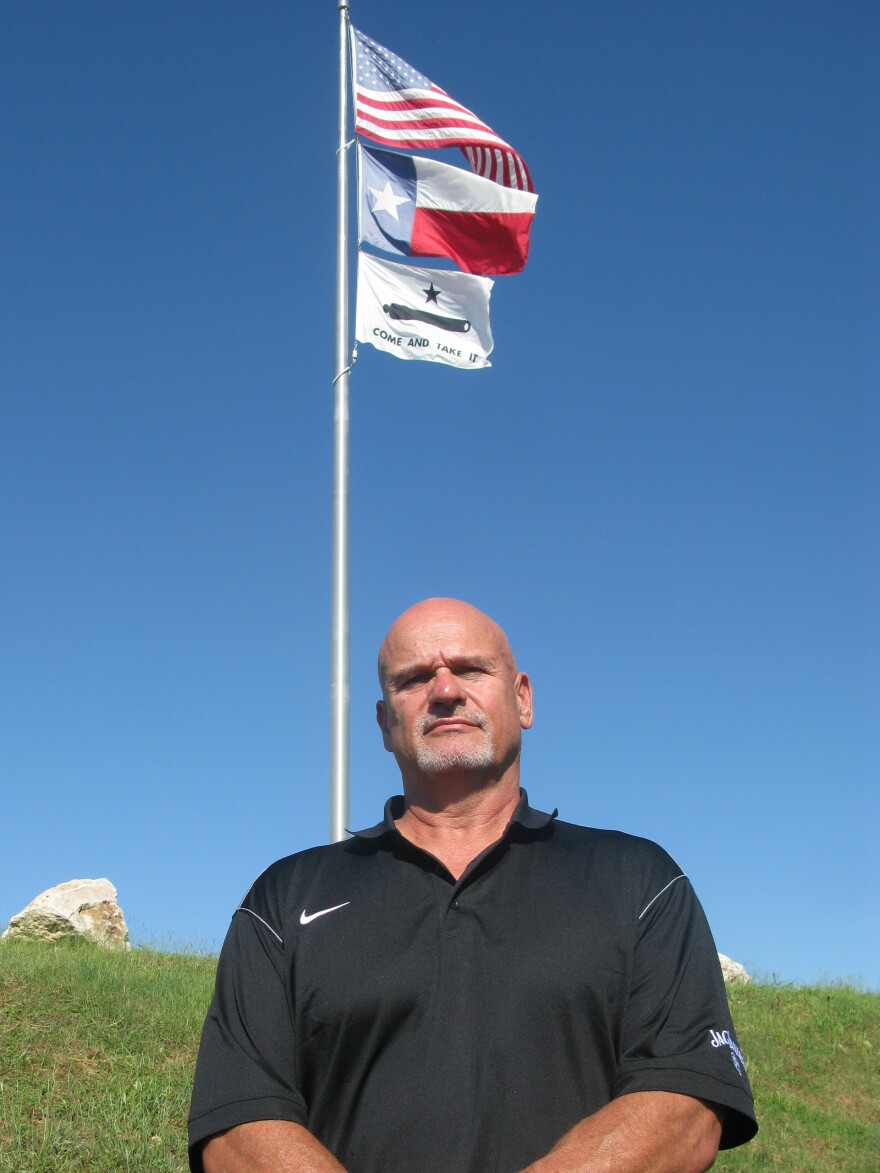On Oct. 2, 1835, a small group of rebellious colonists in what is now South Texas defied Mexican rule with the memorable battle cry: "Come and take it!" The dare referred to a small brass cannon, but it became a declaration of Texas' independence and grit as famous as "Remember the Alamo." Today, you can see a twist of the historic slogan on the Come and Wash It Laundromat and Come and Style It beauty salon, both in the town of Gonzales.
What chaps some townfolk, though, is how activists and marketers far from Gonzales are lifting the slogan with no appreciation of its origins associated the first shot of the Texas revolution. They think it's been cheapened — and they want it back.
"A lot of people take it and co-opt it without understanding the reason behind it," says Erik McCowan, a reporter with the Gonzales Inquirer newspaper who recently wrote a column on the topic. "I think a lot of that has to do with just plain ignorance. People fought and were ready to die over this flag."
The Battle of Gonzales "was the flashpoint of the Texas revolution," says Stephen Harrigan, author of the acclaimed historical novel, The Gates of the Alamo.
As the story goes, the Mexican army had loaned the tiny settlement of Gonzales a small brass cannon to defend itself from hostile Apaches. But the American colonists in Gonzales, who came to be known as Texians, had grown restive. So the Mexican commander in nearby San Antonio sent soldiers to take back the cannon.
The response?
The men of Gonzales fired the little cannon at the Mexican troops. And they raised a flag sewn from a woman's wedding dress that showed a lone star, an image of the cannon, and the words "Come and Take It."
The slogan was used earlier during the American Revolutionary War in the Province of Georgia.
The motto is sacred to the modern city of Gonzales. Today it's proudly displayed on a giant flag in a downtown square and on the shirts of city employees.
Allen Barnes, the Gonzales city manager, is particularly exasperated with Second Amendment activists who have adopted the historic slogan and substituted an AR-15 semiautomatic rifle for the cannon. "To me that completely changes the tone and the message of the flag," Barnes says. "That's no longer our flag. That is a flag created by other folks."
The "Come and Take It" flag — even without an assault-style rifle — is enjoying a surge in popularity in the current political climate. Drive across Texas and you can see it flying incongruously next to the American and the Texas flags.
"We fly a 'Come and Take It' flag in front of our establishment because we believe the federal government has gotten too big and that it's reaching out too far," says Max Bordelon, the proprietor of Max's Roadhouse, north of San Antonio. Asked who, exactly, is coming to take what, he blurts: "Our rights! Our freedoms!"

It's not just anti-government folks.
Abortion rights advocates have made banners with the phrase next to the image of a uterus. McDonald's put "Come and Get It" on a flag with a hamburger. You can buy a T-shirt with a big joint on it that says, "Come and Toke It."
For author Stephen Harrigan, this appropriation of history just feels wrong.
"If you grow up in Texas, it's part of your bloodstream, it's part of the DNA that you have encoded within you," he says. "It feels ornery and defiant and there's a part of Texans that respond to that."
No one is going to fight and die over Come and Wash It, the laundromat, or Come and Toke It, the T-shirt. The people of Gonzales, Texas, urge anyone who wants to borrow their famous battle cry to at least take the time to learn the real history of " Come and Take It. "
Copyright 2020 NPR. To see more, visit https://www.npr.org. 9(MDAxODQzOTgwMDEyMTcyNjI4MTAxYWQyMw004))



